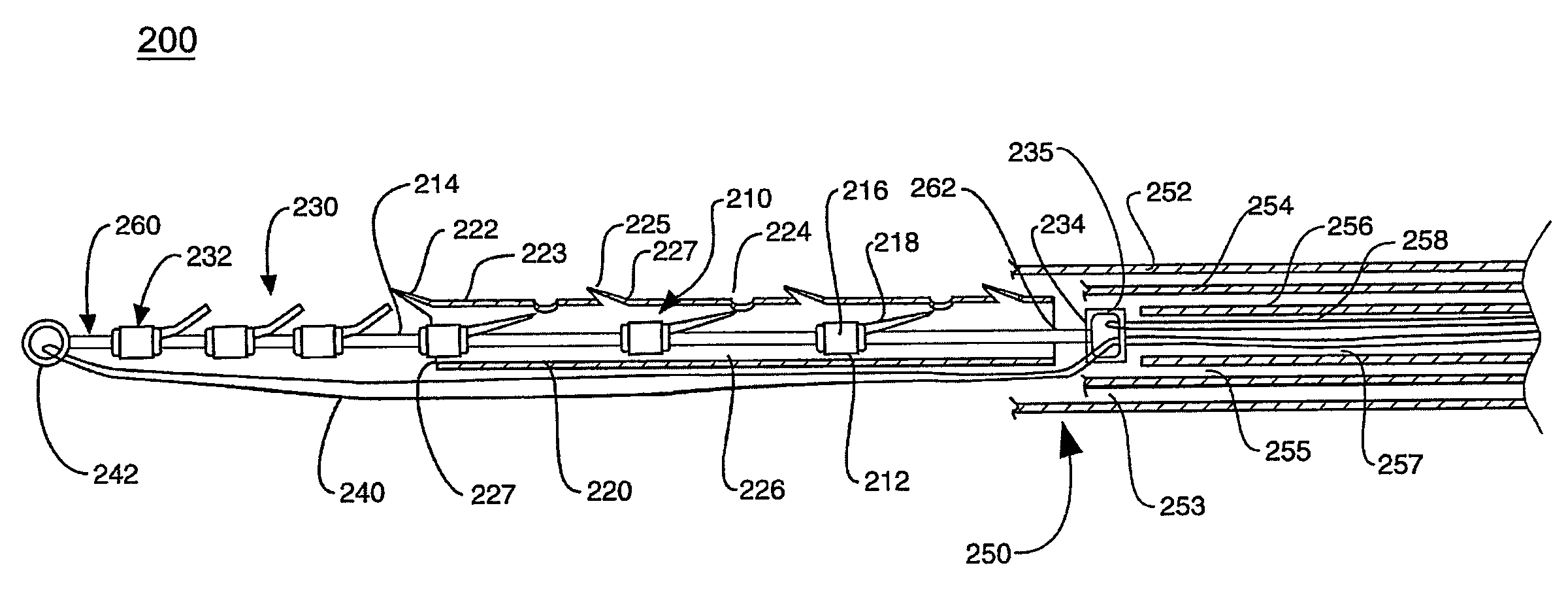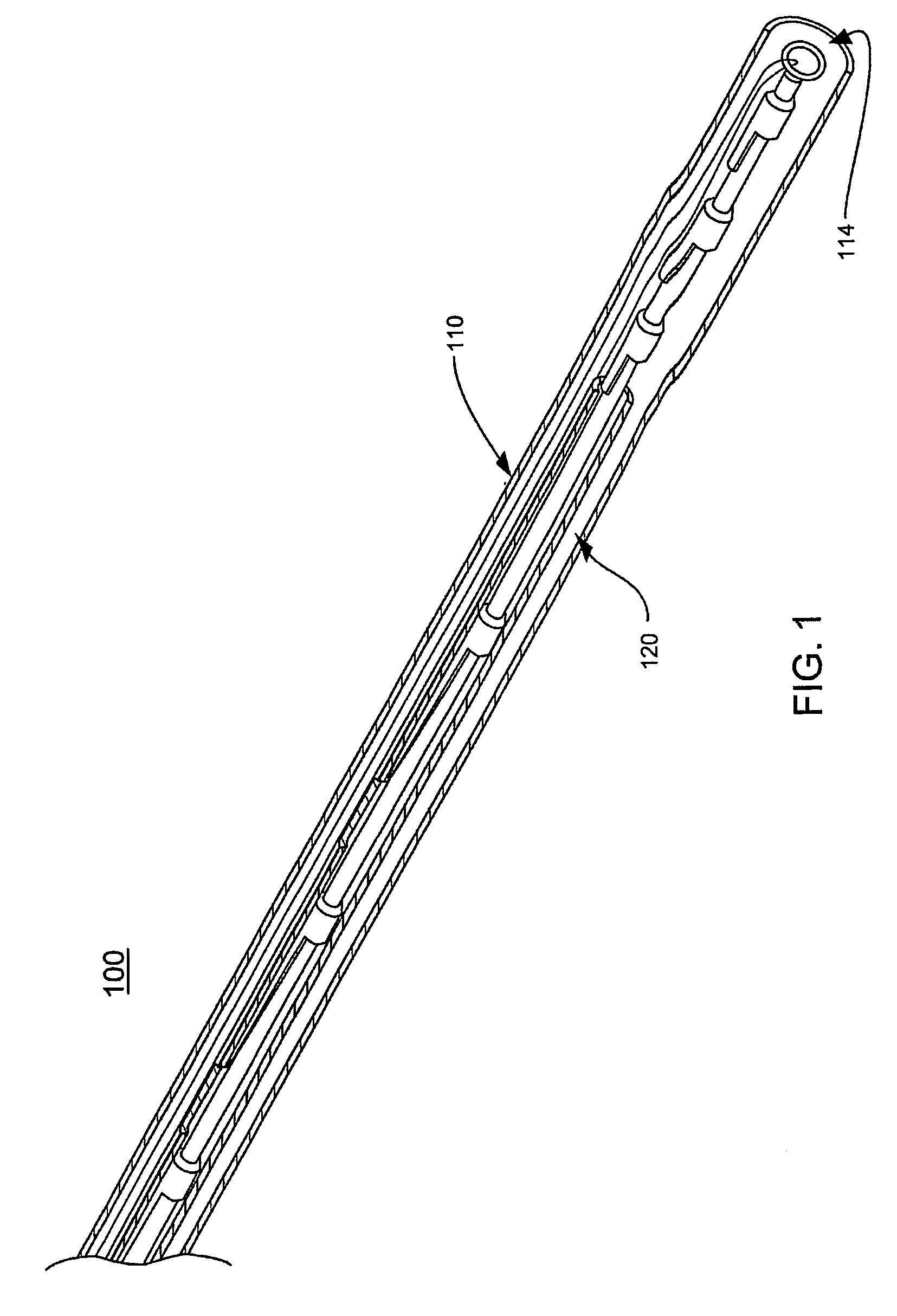Cardiac valve annulus reduction system
a technology of annulus reduction and valve, applied in the field of medical devices, can solve the problems of restricted blood flow, backward leakage of blood, and valve function proper function,
- Summary
- Abstract
- Description
- Claims
- Application Information
AI Technical Summary
Benefits of technology
Problems solved by technology
Method used
Image
Examples
Embodiment Construction
[0031]FIG. 1 shows a cardiac valve annulus reduction assembly and a delivery system in accordance with the present invention. Annulus reduction delivery system 100 includes delivery catheter 110 having lumen 114 there through. Annulus reduction assembly 120 is disposed within lumen 114 and is described in more detail below.
[0032]FIG. 2 shows a delivery system 100 positioned via a femoral venous transeptal approach with the system distal end lying within the left atrium. As shown, annulus reduction assembly 120 has not been deployed from delivery catheter 110. Annulus reduction assembly 120 may be delivered via percutaneous transluminal techniques or via surgery using open-chest or port access modalities.
[0033]For the exemplary case of mitral valve remodeling shown in FIGS. 1 and 2, annulus reduction assembly 120 is implanted from the left atrium 130. An elongate element 132, such as a catheter having lumen 134, is first inserted to provide a path for annulus reduction delivery syste...
PUM
 Login to View More
Login to View More Abstract
Description
Claims
Application Information
 Login to View More
Login to View More - R&D
- Intellectual Property
- Life Sciences
- Materials
- Tech Scout
- Unparalleled Data Quality
- Higher Quality Content
- 60% Fewer Hallucinations
Browse by: Latest US Patents, China's latest patents, Technical Efficacy Thesaurus, Application Domain, Technology Topic, Popular Technical Reports.
© 2025 PatSnap. All rights reserved.Legal|Privacy policy|Modern Slavery Act Transparency Statement|Sitemap|About US| Contact US: help@patsnap.com



